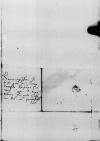Reverendissimo in Cristo patri et domino ⌊Ioanni Dantisko⌋ episcopo Culmensi, Oratori
serenissimi
⌊regis Poloniae⌋ in aula caesarea, domino mihi gratiosissimo
Reverendissime Domine mihi gratiosissime.
Vestram Reverendissimam Dominationem in multos annos sanam et incolumem esse cupio.
Dominus meus reverendissimus ⌊dominus cardinalis⌋ mandavit quod Vestrae Reverendissimae Dominationi scriberem litteras, ut Vestra Reverendissima Dominatio velit ad dominum meum ad ⌊Curanium⌋ unum diem aut duos venire ante adventum ⌊imperatoris⌋ illicque reverendissimus dominus meus promit
<t>
it Vestram Reverendissimam Dominationem optimum et hilarem vultum ostendere, dominusque meus sperat ali{e}ter Vestra Reverendissima Dominatio non factura, nam et, cum eramus in ⌊Leodio⌋, semper sperabat adventum Vestrae Reverendissimae Dominationis dominus meus. Rem gratiorem et acceptiorem Vestra Reverendissima Dominatio non potest ⌊ei⌋ facere, tantum ad suam dominationem ad ⌊Carinium⌋ venire, qui a longo tempore desiderat videre Vestram Reverendissimam Dominationem. Cuius gratiae ego me commendo.
Datum ⌊Curiniae⌋, secunda die Januarii anno Domini 1532.
Nicolaus Myszkowszky servitor Vestrae Reverendissimae Dominationis

